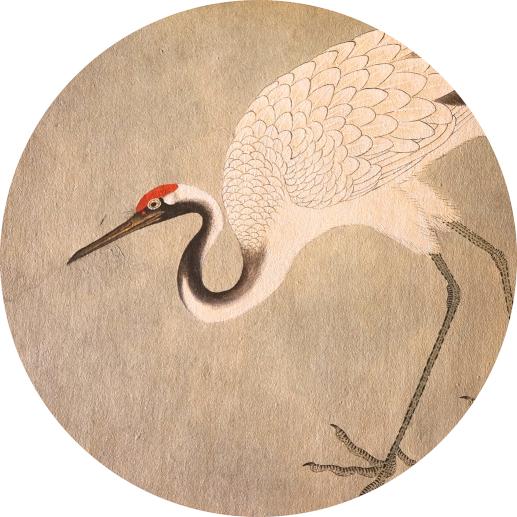Special Exhibition "Aves Japonicae – Birds in Japan"
2014.08.05-2014.12.28
STUDIOLO
Human beings have long been watching nature, including birds. How did the ancient Japanese see birds?
In the contemporary era, observation of birds pertains to natural science, biology and ornithology. This Systema Naturae (natural science) originated in ancient Greece, then developed rapidly in Europe after the Renaissance. In Japan, natural science in its contemporary meaning was introduced from the West and quickly spread after the Meiji era. Nevertheless, this does not mean that the Japanese did not watch and study birds before the importation of European science. The picture books of the time record the appearance of birds as the Japanese saw them then, along with descriptions. This precisely is how birds appeared to the Japanese at the time.
The present exhibition showcases a copy of Baien-kinpu drawn by Motohisa Mouri in the late Edo era. This is a part of Baien-gafu, the most authorized picture book of the era. We will also feature stuffed specimens on loan from the Yamashina Institute of Ornithology, in order to have the birds and the drawings side by side. In other words, this provides the same viewpoint as the painter who drew the birds.
Naturally, this illustrated album is an artist book regulated by traditional style and pictorial technique, and some of them lack realism to the point of being hardly identifiable. However, just like stuffed specimens, these pictures are a reconstruction of reality according to a given interpretation and expressive techniques. Through this comparison with specimens, we hope the audience feels the reality and beauty expressed in traditional Japanese arts.
The Japanese have found beauty in birds and have expressed it in numerous ways. One of them is the feather brushes used for tea ceremony (Cha no yu). Feather brushes were originally practical tools used to swipe dust, before serving as ceremonial and symbolical articles for purification. Generally, feathers of beautiful, classy and rare species are used. The crane is most appropriate, as it is a symbol of luck and recognized as most formal. However, many other types were made according to the atmosphere of the tea ceremony, whether it is a refined sense of beauty or eccentricity. This small tool is made with minimal artificial treatment so as not to spoil its natural beauty, and the artist has not dyed or clipped the feather.
If there are heavily modified species of birds in the manner of a bonsai, as the phoenix (Long-tailed fowl) or the chabo (tiny fowl), on the other hand, feather brushes are made without any modification on any single feather. Similarly, some paintings are extremely stylized whereas other are realistic sketches made in front of the bird. Please have a look at the different ways the Japanese have stared at the birds.
[Organizer] The University Museum, The University of Tokyo (UMUT)
[Support] Yamashina Institute of Ornithology, Tamaki Shimosaka, Iida-Koujitsudo
[Feather brush supervisor] Tamaki Shimosaka

